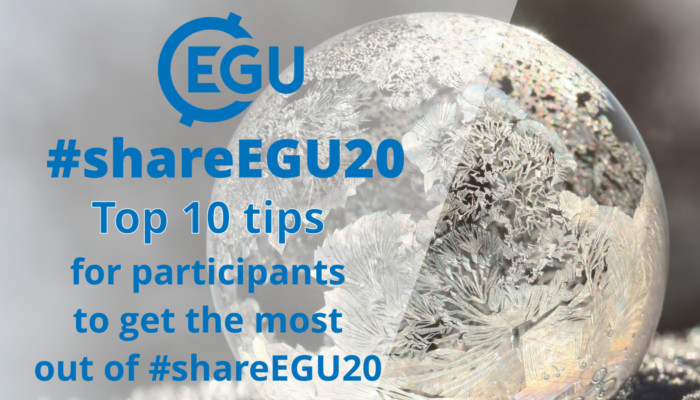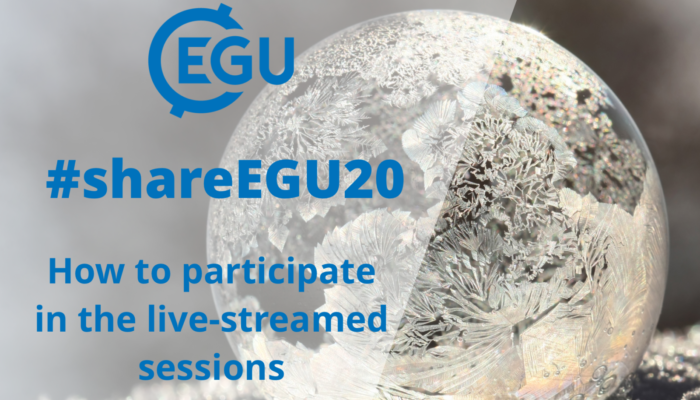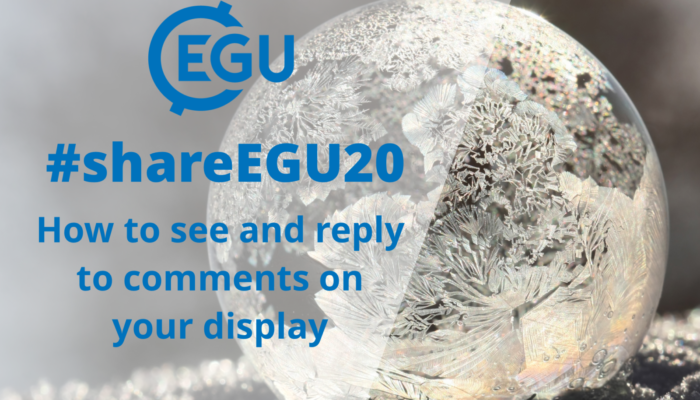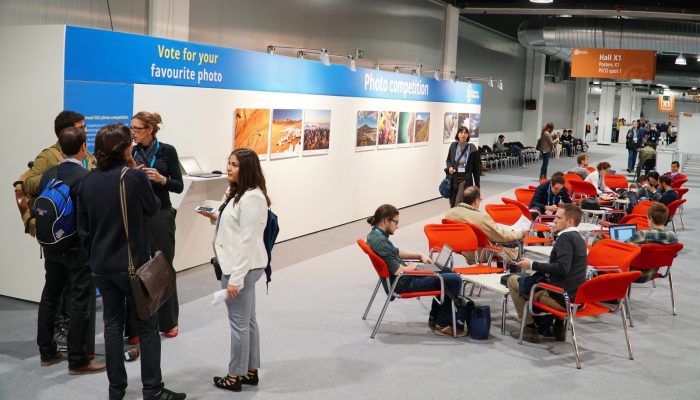This year’s Photo Competition judging panel did a fantastic job of narrowing down the outstanding photo submissions to the EGU’s Photo Competition to just 10 finalists! The finalist photos are listed below and on the Imaggeos website where you can vote for them from today (27 April) until 7 May 2020. Then three photos with the most votes will be announced online at midday on 8 May! C ...[Read More]
#shareEGU20: top 10 tips for participants to get the most out of Sharing Geoscience Online

So, you’ve taken the plunge – you have decided to upload your materials as an author, or committed to hosting your session with your fellow conveners, or perhaps started to add sessions to your personal programme as a participant. What comes next? Interacting with other researchers using one of our new platforms! During these final two weeks before the event, we are posting a variety of informatio ...[Read More]
#shareEGU20: how to participate in the live-streamed sessions

The foundation of Sharing Geoscience Online, as the name of course suggests, is interacting with other scientists, whether via the presentation materials you upload, comments you exchange with colleagues, and/or the live text chats scheduled for each session. In addition to the text-based interactions, all week you’ll also be able to participate in a series of Union-wide sessions, short courses an ...[Read More]
#shareEGU20: comments on your display presentation

Now that you have uploaded your presentation materials, you might start to get some comments! This is great news and is exactly how we hope people will use our format to share ideas about their research. If you are wondering about how you will be informed that your display presentation has comments, how to reply and what to do if you need to report a comment for violating the EGU’s Code of C ...[Read More]

